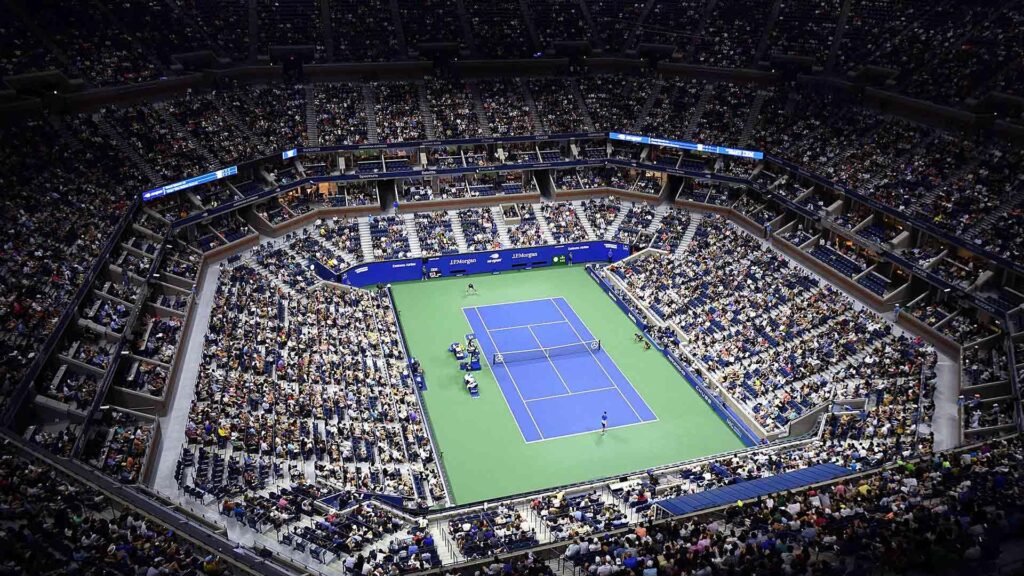The U.S. Open, one of tennis’s premier Grand Slam tournaments, offers more than just high-stakes athletic competition; it serves as a compelling reflection of contemporary American society. From the diversity of its players and fans to the cultural and economic dynamics on display, the event provides unique insights into the values, challenges, and contradictions shaping the nation today. This article explores how the U.S. Open mirrors broader trends and tensions within America, revealing what the tournament’s unfolding narrative tells us about the country’s identity and future.
The U.S. Open Reflects America’s Complex Cultural Landscape
The tournament mirrors the intricate mosaic of American society, showcasing not just athletic prowess but a deeper narrative about identity and inclusion. Amidst the roar of the crowd and the intensity on the court, players from diverse backgrounds highlight the country’s evolving demographic landscape. From the rising stars breaking stereotypes to veterans embodying tradition, the event serves as a microcosm of the nation’s ongoing dialogue about race, class, and opportunity.
Subtle tensions play out alongside grand celebrations, reflecting broader societal dynamics that extend far beyond the lines of the tennis courts. Discussions around access, representation, and cultural expression come to the fore, amplified by media coverage and fan engagement. These elements combine to create a rich tapestry that captures America’s contradictions and hopes, revealing the sport’s role as both a stage and a mirror.
- Emerging diversity: Players from varied ethnicities and socioeconomic backgrounds challenging norms.
- Commercial impact: Sponsors and broadcasters navigating cultural sensitivities and market realities.
- Fan demographics: A growing mix of traditional supporters and new audiences reshaping the atmosphere.
| Aspect | Representation | Implication |
|---|---|---|
| Player Origins | Global, multicultural | Expands national identity discussion |
| Viewership | Urban and suburban splits | Reflects economic divides |
| Media Narratives | Varied editorial perspectives | Highlights ideological spectrum |
Economic Disparities Revealed Through Tennis’s Grand Stage
The grandeur of the U.S. Open is unmistakable: pristine courts, roaring crowds, and multi-million dollar prize pools. Yet beneath this dazzling surface lies a stark reality that reflects the broader social fabric of America – the glaring economic disparities that shape access and success in tennis. While top-tier players benefit from elite coaching, sponsorship deals, and international exposure, many promising talents from underprivileged backgrounds are sidelined due to lack of resources. This economic divide isn’t just about money; it dictates who gets to dream big and who is forced to abandon those dreams prematurely.
Examining the pathways to professional tennis reveals systemic obstacles that often go unnoticed amidst the excitement of the tournament. Consider the costs associated with training and travel – expenses that can run into tens of thousands annually:
| Expense Category | Estimated Annual Cost |
|---|---|
| Private Coaching | $30,000 |
| Travel & Accommodation | $20,000 |
| Equipment & Apparel | $5,000 |
| Nutrition & Physical Therapy | $7,000 |
Such figures highlight why tennis, often perceived as a meritocracy, is deeply influenced by privilege. Initiatives aiming to democratize the sport struggle to level a playing field tilted by wealth. As the U.S. Open continues to shine under global spotlights, it inadvertently exposes a fundamental truth: *economic advantage often determines who can rise to the most prestigious stages in American sports.*
The Role of Diversity and Inclusion in Modern Sports
Modern sports serve as a powerful microcosm of society, reflecting the ongoing dialogue and struggles around diversity and inclusion. The U.S. Open, far beyond a mere tennis tournament, has become a platform where athletes of varied backgrounds-racial, cultural, and socioeconomic-converge, challenging traditional norms. This confluence not only highlights talent but also underscores the need for equitable access and representation. Sports institutions are increasingly recognizing that inclusivity isn’t just idealistic; it’s essential for fostering competition, innovation, and growth across all levels.
Inclusion in athletics manifests in multiple dimensions, including but not limited to:
- Gender equality initiatives, promoting equal pay and opportunities.
- Racial representation both on the field and in leadership roles.
- Accessibility for athletes with disabilities.
- Cultural sensitivity that respects diverse traditions and customs.
| Aspect | Impact on Sports | Example from U.S. Open |
|---|---|---|
| Gender | Equal prize money schemes | Equal purses since 1973 |
| Race | Increased diversity of champions | First African-American champion: Arthur Ashe |
| Disability | Innovation in adaptive sports | Parallels drawn with wheelchair tennis events |
Strategies to Foster Greater Equity and Opportunity in Athletics
To achieve true inclusivity in athletics, it is essential that investment prioritizes communities traditionally marginalized in the sporting world. This means channeling resources into grassroots programs that provide not only access to quality training facilities but also mentorship and academic support. Creating partnerships between schools, local governments, and sports organizations can amplify these efforts, enabling young athletes to overcome socioeconomic barriers that have historically limited their participation and advancement.
Equity also demands a reevaluation of recruitment and selection processes, ensuring they recognize diverse forms of talent beyond conventional metrics. Implementing unbiased evaluation criteria and expanding scouting networks into underrepresented areas can uncover hidden potential. Consider the following model outlining key focus areas in cultivating equitable opportunity:
| Focus Area | Action Steps | Expected Impact |
|---|---|---|
| Community Investment | Fund youth leagues, build local facilities | Increased participation rates |
| Talent Identification | Expand scouting in underserved areas | More diverse athlete representation |
| Education & Mentorship | Develop support programs | Higher athlete retention and success |
Insights and Conclusions
As the final match concludes and the crowds disperse from the courts of the U.S. Open, the tournament leaves behind more than just champions and records. It serves as a vivid reflection of contemporary America-highlighting its diversity, resilience, and the complex social dynamics at play. Beyond the scorelines, the Open offers a lens through which to examine broader cultural and economic currents shaping the nation today. In this way, the tournament is not merely a sporting event but a timely commentary on the state of American society.





